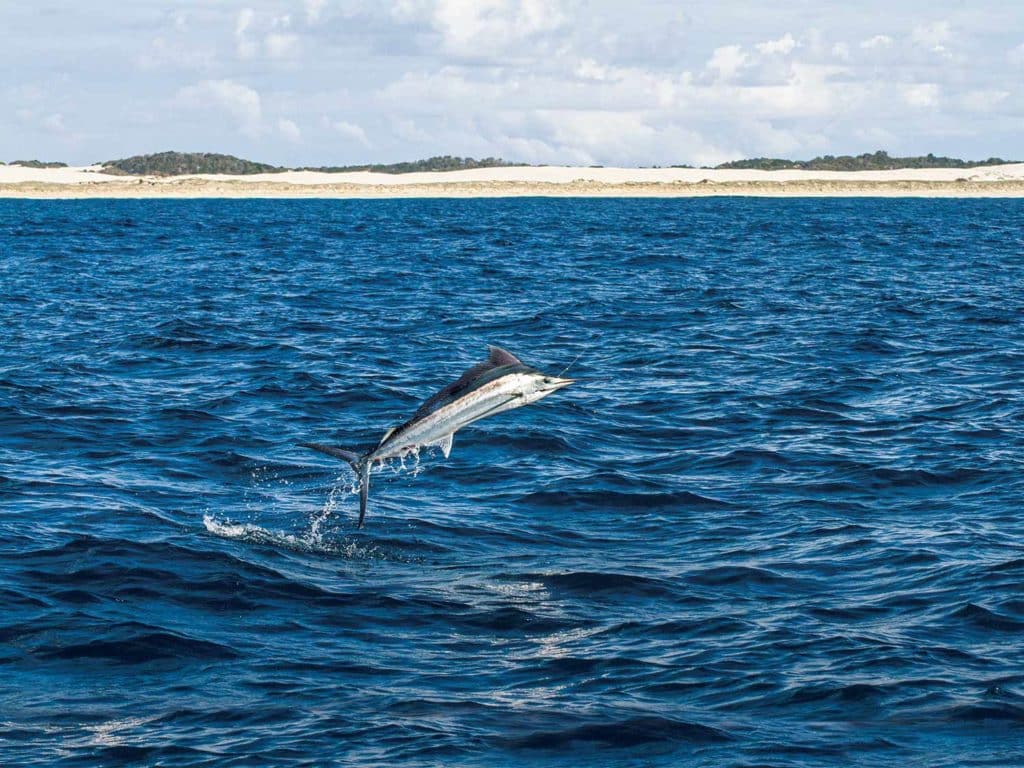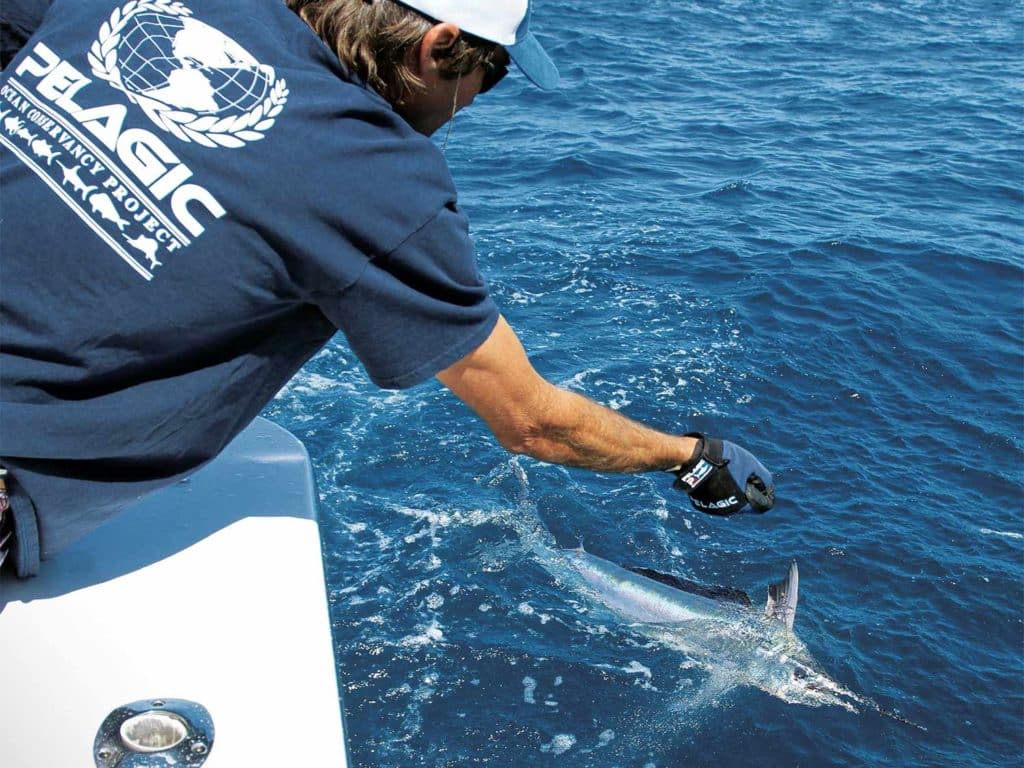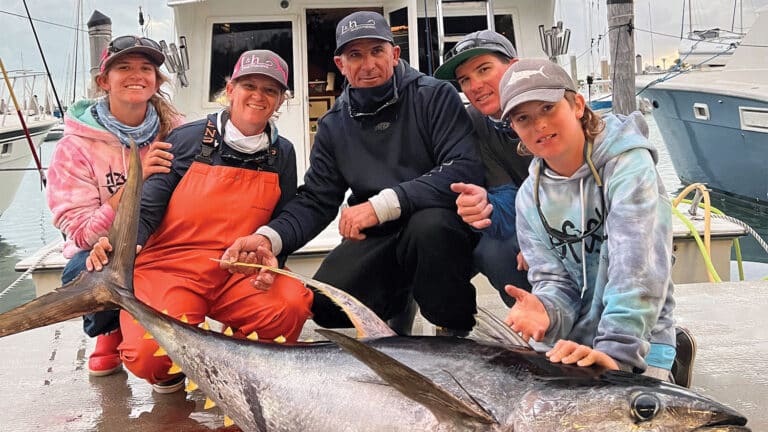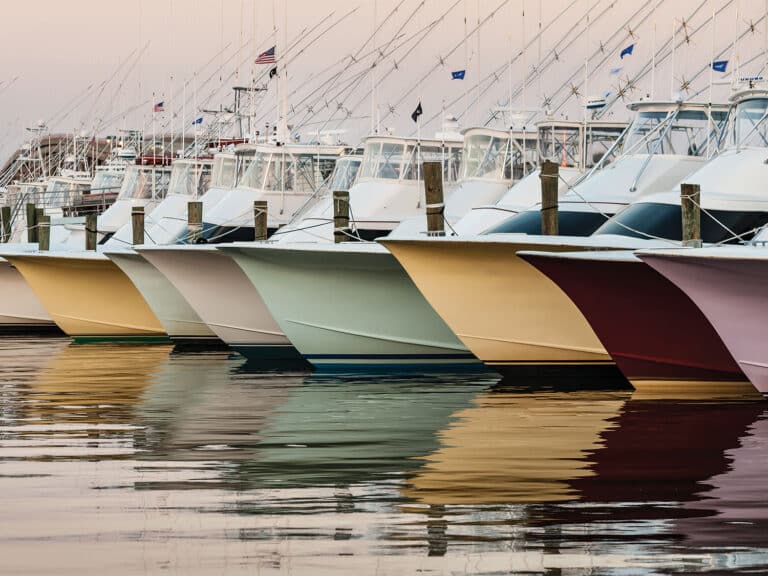
Fraser Island is the world’s largest sand island, nestled on the southeast Queensland coastline off Hervey Bay, Australia. It has made headlines in recent years because of its outstanding yet still developing blue marlin fishery. But in 2019, the annual arrival of the juvenile black marlin to its plentiful bait grounds stole the attention of captains and anglers throughout the region—simply by the sheer numbers of fish being caught—by producing many double-figure days.
At the very southern tip of the Great Barrier Reef, spanning close to 75 miles of the coastline, the East Australian Current funnels warm and nutrient-rich water from the North Queensland tropics to the south. These conversions produce a vibrant, year-round fishery. And in the mild Queensland winter, with the current, comes the baby black marlin.
These fish are voracious feeders at this stage in their life cycle and make for fun fishing—especially for anglers keen on tease and switch methods. These little blacks are the first-year product of the previous year’s giant black marlin spawning season and stay in the waters of Fraser Island for months at a time, attracted by the huge schools of bait. Their only goal in life at this age is to add weight rapidly in order to elevate themselves higher in the food chain. So, we do actually see the fish grow throughout the season. Their numbers are further bolstered throughout the year by the arrival of fish traveling south with the current from North Queensland. In fact, we can reliably catch the juvenile blacks here from as early as May right through November—and most times into December.
But where do they come from?
The most educated speculation points to the juveniles caught at the start of winter at Fraser Island coming specifically from a more southern-based spawn than Cairns, because of their size—and therefore age—at that time of year.
The large female black marlin can spawn all the way down the Great Barrier Reef to Lady Musgrave Reef above Fraser Island, as evidenced by the fact that 1,000-pound-plus females—most recently a 1,431-pound black marlin in November 2018—are caught here. But many also believe that the fish do spawn in good numbers south beyond the Ribbon Reefs, perhaps around the Swain Reefs as well.
These fish are making their way inshore from the breeding location at the same time that the little blacks in north Queensland to continue to feed and grow. Last year was a great giant black marlin season for both size and numbers, and seeing these fish here in such good supply in 2019 is extremely validating for Australia’s fishery and conservation efforts.
Blacks on the Flats
It is often the marlin on the flats inside of the island that we see here later in the year—around October and November—that get the most attention.
It is thought that a second run of the juvenile blacks—larger fish that have already spent the winter feeding in North Queensland—that the provide the base of the inshore fishery on the flats of Fraser.
The fish travel down the 30-meterline from Cairns and Townsville, and as they get to Fraser, the island acts as a big fish trap, herding them inshore inside the island and into Hervey Bay. These are the fish that are often caught in just a few meters of water at Rooney’s Point and Wathumba Creek before they eventually find their way back outside the island and continue their southern migration over the summer.

Developing Fraser Island
David “Tagpole” McMaster has been fishing Fraser Island for the past several seasons for the duration of the initial little black marlin run in June through August on his 30-foot Black Watch, Pole Dancer, and he considers it to be a world-class fishery. He caught his first black marlin here as a teenager in 1986 when the Brisbane Sport Fishing Club and Warren Steptoe pioneered the inshore grounds via annual club trips in October and November.
But it was upon the formation of Queensland’s Hervey Bay Game Fishing Club in the 1990s that club members—trolling from the anchorage to the heavy-tackle grounds—were getting swarmed by what they thought were mackerel. The fish turned out to be very small blacks. The Breaksea Spit juvenile black marlin grounds were confirmed.
Beginning in 1995, Hervey Bay GFC founding member Rod March dedicated 10 years to the Fraser marlin fishery, running his 40-foot O’Brien charter boat, Obsession. It’s been a long while since, but in the last several years a few boats in the local game-fishing charter fleet are once again focusing on the fishery and spending time here each year.
Fishing Fraser
Fishing here is not necessarily easy, where there are long distances to travel just to get around the island itself. As Capt. Luke Fallon of KEKOA Sports Fishing likes to say, “We are traveling some 45 miles from the harbor to fish within 2 miles of the beach!”
Trailer boats have to consider options for carrying extra fuel, but the larger charter boats, many of which are equipped with gyrostabilizers, are anchoring along the island itself. A much more comfortable affair, staying on a liveaboard brings the fishery much closer, especially when on any given day you can quite literally pull the anchor and start fishing. Catching a little black while still anchored is a real possibility as well.







